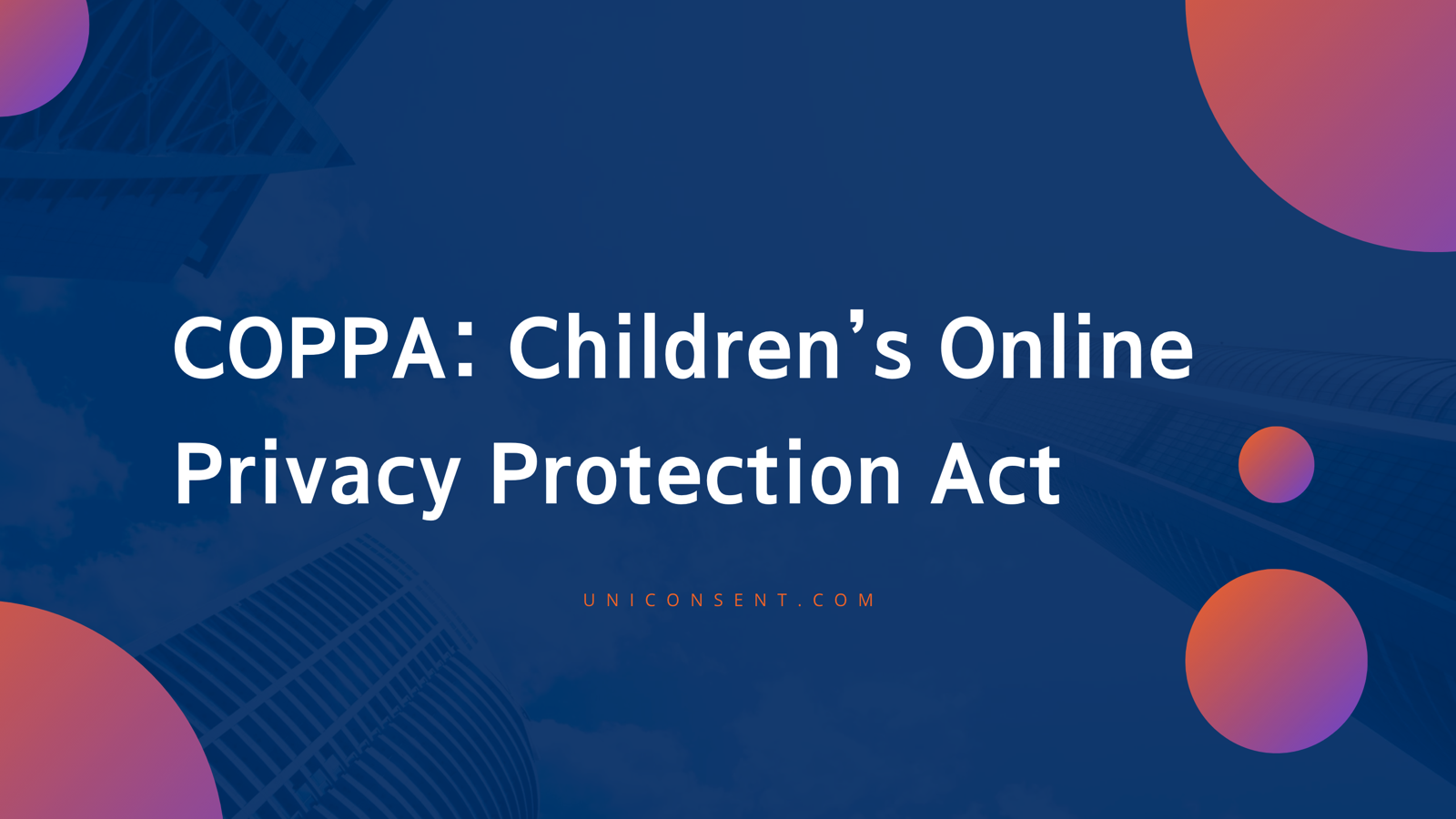COPPA-Konformitäts- und Zustimmungslösung
Gemäß US-amerikanischer Vorschrift gilt COPPA für die Erhebung personenbezogener Informationen von Kindern unter 13 Jahren. COPPA Verifiable Parental Consent (VPC) ist erforderlich, um sicherzustellen, dass Eltern wissen, welche Informationen über ihre Kinder geteilt werden. COPPA schützt die Privatsphäre und Sicherheit von Kindern online, einschließlich Einschränkungen beim Marketing für Personen unter 13 Jahren.

Children’s Online Privacy Protection Act (COPPA)
Under U.S. regulation the collection of personal information from children under the age of 13. COPPA Verifiable Parental Consent (VPC) is required to make sure parents know what information is shared about their children.
The COPPA says that an operator must choose a method reasonably designed in light of available technology to ensure that the person giving the consent is the child’s parent.
COPPA leaves the method up to you, but it's important to choose a method or system reasonably designed in light of available technology to ensure that the person giving the consent is the child's parent.
If you have actual knowledge that you’re collecting personal information from a site or service that is directed to children, you may get consent directly or through the child-directed site or service.
Who does COPPA apply to?
COPPA applies to operators of websites and online services that collect personal information from children under the age of 13. It also applies to websites with age-restricted content and products such as alcohol, tobacco, gambling or gaming.
What is COPPA age verification?
COPPA age verification is a way for businesses to ensure their customers are who they say they are when selling, marketing or distributing age-restricted or age-sensitive products, services or content. To make sure the internet is a safe online environment for children and for adult freedom and choice.
How UniConsent works for COPPA Compliance?
UniConsent provides multiple choices for websites to make sure your business is fully compliant with COPPA:
-
Knowledge-Based Authentication
-
Email plus where an initial parental consent is performed via email and with a later follow-up message
Consent Collection and COPPA (U.S.)
FTC suggested these method to collect consent:
Sign a consent form and send it back to you via fax, mail, or electronic scan;
-
Use a credit card, debit card, or other online payment system that provides notification of each separate transaction to the account holder;
-
Call a toll-free number staffed by trained personnel;
-
Connect to trained personnel via a video conference;
-
Provide a copy of a form of government issued ID that you check against a database, as long as you delete the identification from your records when you finish the verification process;
-
Answer a series of knowledge-based challenge questions that would be difficult for someone other than the parent to answer;
-
Verify a picture of a driver's license of other photo ID submitted by the parent and then comparing that photo to a second photo submitted by the parent, using facial recognition technology.
-
If you will use a child’s personal information only for internal purposes and won’t disclose it, you can use 'Email plus': send an email to the parent and have them respond with their consent, send a confirmation to the parent via email, letter, or phone call.
-
You must give parents the option of allowing the collection and use of their child's personal information without agreeing to disclosing that information to third parties. If you make changes to the collection, use, or disclosure practices the parent already agreed to, you must send the parent a new notice and get their consent.
More COPPA Consent related articles
Verifiable Parental Consent and the Children's Online Privacy Rule by US FTC
Other US State Privacy Laws
- CCPA: California Consumer Privacy Act, learn more at CCPA
- CPRA: California Privacy Rights Act, learn more at CPRA
- CPA: Colorado Privacy Act, learn more at CPA
- VCDPA: Virginia Consumer Data Protection Act, learn more at VCDPA
- UCPA: Utah Consumer Privacy Act, learn more at UCPA
- COPPA: Children’s Online Privacy Protection Act, learn more at COPPA
Compare different US State Privacy Laws
UniConsent Zustimmungsmanager für DSGVO-Konformität
- Zertifizierter IAB-CMP
- Google Consent Mode v2 support
- Vollständig anpassbare mehrere Stufen
- Implementierung mit einem Tag
- Unterstützung für Google Tag Manager
- Tracking und Einblicke
- Unterstützung mehrerer Sprachen
- Unterstützung von IAB TCF und Google DFP
- Unterstützung der Prebid GDPR CMP API
- Blockieren von JavaScript-Tags und Cookies
- Scannen und Offenlegen von Cookies
- Zertifiziert von IAB Europe
- Einfache Self-Service-Lösung
- Erfahren Sie mehr von Zusammenfassung der DSGVO
Comply With Global Privacy Regulations
Beginnen Sie damit, Ihre Website und Anwendung gemäß EU-DSGVO, US-CPRA, CA-PIPEDA usw. konform zu machen
Registrieren